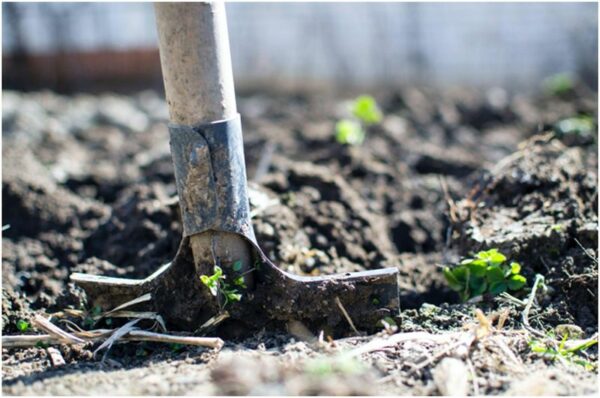As autumn sets in, garden activities tend to ease down and gradually stand down. In relation to the region you live in, your perennial plants could still be blossoming and adding pops of vibrant colours to your garden, or they might have started already to lose leaves. Your annual veggies are also getting closer to their yielding period and harsh weather is slowly affecting them.
After spring and summer filled with planting and harvesting, it is often easy to forget about your garden and it is harder to control it during winter. However, to have it easier when the winter passes, several well-thought-out measures that you take now, will help reduce work later on.
To provide proper care during wintertime and minimize your efforts in spring, take the following suggestions into consideration.
1. Clean up
Whereas most plants that have passed their prime can be left in the ground to rot and give nourishment to the soil, some may contain various illnesses, including fungi and pests. If there had been visible damage signs on your plants during the growth season but you took no action, now is your chance to clear things out. Whichever spent crops you leave behind will preserve the soil, minimise erosion, and provide sustenance for hibernating pollinators.
This is also the right moment to eradicate invasive weeds that have spread during the growing season. However, don’t just move them to a different spot in your garden because most invasive weeds are still viable even when thrown in a corner pile or compost.
2. Prepare the garden soil for spring
Spring is when most people treat their soil, but autumn is an ideal time to fertilise the ground and introduce a variety of soil enhancements. In most climates, feeding the soil in autumn means there’ll be plenty of time for them to disintegrate, enrich the soil, and activate their biological components.
Treating the soil at this point also means a great chunk of your pre-busy season work will be completed. After fertilising, proceed with mulching your soil or adding a cover that will protect your crops when winter rains set in and push down the nutrients below the levels of active root systems. You should also plan to de-mulch in early spring before new planting.
3. Prune perennials
Autumn is also ideal to start trimming your perennials but be careful when choosing which ones. For instance, plants such as fennel prefer to be pruned in fall, but this isn’t a good idea for raspberry canes as research has shown that this plant still feeds its crown even during winter.
Now, shift your focus to pruning herbs such as rosemary, thyme, and sage, then roses, and vegetables such as rhubarb and asparagus. You should skip pruning the flowering perennials with seed heads as these provide nourishing meals for birds active during winter.
4. Separate and re-plant bulbs
With most of your spring bulbs gone, certain flowering bulbs such as lilies had only recently bloomed. Wait for about three to four weeks and then dig them up and split them if they seem to be crowded. Start by loosening the soil a few inches away from the stalk, then with gentle movements pull the bulbs out and break up the bulblets so they could be transplanted elsewhere.
5. Replenish mulch
There are numerous benefits to mulching in the winter as opposed to doing it in the summer – water loss is significantly reduced, the soil is well protected against erosion and weed development is hindered. Adding mulch in winter also protects the soil when it transitions into colder weather – when the earth freezes and thaws it can have a negative effect on entire plants and their root system.
Covering the surface of the soil with a rich coat of mulch helps control both the levels of moisture as well as the temperature of the soil. Adding mulch around the vegetables you have left in the garden to be harvested during fall and winter will also protect your crops against severe frosts and prolong their lifespan.
6. Plant a vegetable garden for the winter
Planting vegetables at this point means you’ll have the first harvest by the end of winter or in early spring. Find a decently sun-lit spot in your garden because even though it’s winter vegetables, they still require some warmth in order to grow and develop.
The best choice of winter vegetables would include English spinach and different sorts of peas and beans. In areas with a milder, subtropical climate, the choice is wider and includes broccoli, lettuce, onions, spring onions, radishes, spinach, and turnips. To keep the garden pests at bay without using any pesticides, opt for organic pesticides and companion planting.
7. Maintain your lawn
A common mistake most people make is to forget about our garden completely during winter. It’s wrong to assume that all plants are dormant in the winter season. Every garden requires year-round maintenance, but on the other hand, all the hours you invest into gardening during fall and winter will ensure better results once the spring arrives.
As you’re planting your winter vegetables, don’t neglect your lawn maintenance. During winter, the lawn soil tends to harden and become compacted which prevents water from getting to the roots. Soil aeration is recommended. Also, limit the scope of fertilising your lawn at this point as there isn’t much growth going on so the lawn won’t require extra nutrition.
Whatever region you live in, there’s always something you can do to prepare your garden for next season. At this point, the steps listed here should not only help your post-winter gardening, but also make the warm seasons pass more smoothly, and significantly improve your yields.
Article Submitted By Community Writer




